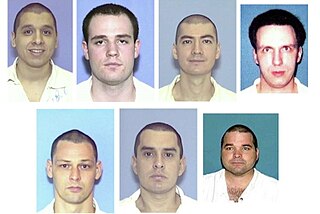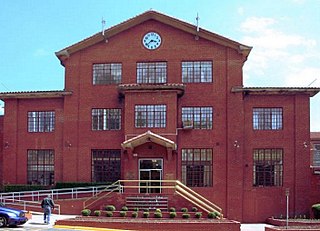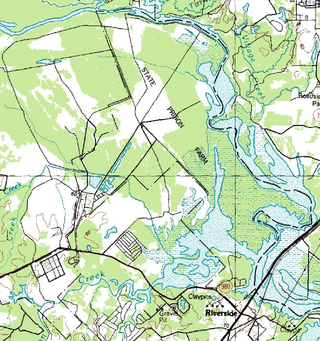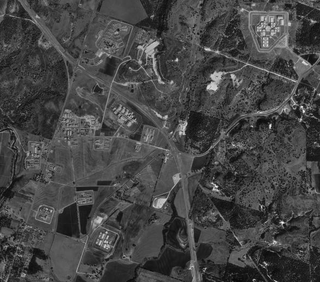
Walker County is a county located in the east central section of the U.S. state of Texas. As of the 2020 census, its population was 76,400. Its county seat is Huntsville. Initially, Walker County was named for Robert J. Walker, a legislator from Mississippi who introduced into the United States Congress the resolution to annex Texas. Walker later supported the U.S. during its Civil War and earned some enmity for it. In order to keep the county's name, the state renamed it for Samuel H. Walker, a Texas Ranger and soldier in the United States Army.

Huntsville is a city in and the county seat of Walker County, Texas, United States. The population was 45,941 as of the 2020 census. It is the center of the Huntsville micropolitan area. Huntsville is in the East Texas Piney Woods on Interstate 45 and home to Sam Houston State University, Texas State Prison, the Texas Department of Criminal Justice, Huntsville State Park, and HEARTS Veterans Museum of Texas.

The Texas 7 were a group of prisoners who escaped from the John B. Connally Unit near Kenedy, Texas, on December 13, 2000. Six of the seven were apprehended over a month later, between January 22–24, 2001, as a direct result of the television show America's Most Wanted. The seventh committed suicide before he could be arrested. The surviving members were all convicted and sentenced to death for the murder of Irving, Texas, police officer Aubrey Wright Hawkins, who was shot and killed when responding to a robbery perpetrated by the Texas Seven. Four of the six sentenced have since been executed.
Arizona State Prison Complex – Lewis, one of 13 prison facilities operated by the Arizona Department of Corrections (ADC) is in Buckeye, Maricopa County, Arizona, 43 miles west of the state capital of Phoenix.

A prison farm is a large correctional facility where penal labor convicts are forced to work—legally or illegally—on a farm, usually for manual labor, largely in the open air, such as in agriculture, logging, quarrying, and mining. In the United States, such forced labor is made legal by the thirteenth amendment to the Constitution; however, some other parts of the world have made penal labor illegal. The concepts of prison farm and labor camp overlap, with the idea that the prisoners are forced to work. The historical equivalent on a very large scale was called a penal colony.

Capital punishment is a legal penalty in the U.S. state of Texas for murder, and participation in a felony resulting in death if committed by an individual who has attained or is over the age of 18.

Texas State Penitentiary at Huntsville or Huntsville Unit (HV), nicknamed "Walls Unit", is a Texas state prison located in Huntsville, Texas, United States. The approximately 54.36-acre (22.00 ha) facility, near downtown Huntsville, is operated by the Correctional Institutions Division of the Texas Department of Criminal Justice. The facility, the oldest Texas state prison, opened in 1849.

The Texas Department of Criminal Justice (TDCJ) is a department of the government of the U.S. state of Texas. The TDCJ is responsible for statewide criminal justice for adult offenders, including managing offenders in state prisons, state jails, and private correctional facilities, funding and certain oversight of community supervision, and supervision of offenders released from prison on parole or mandatory supervision. The TDCJ operates the largest prison system in the United States.
Reverend Carroll L. "Bud" Pickett was a Presbyterian minister in Huntsville, Texas. In the 1960s and 1970s, Pickett served as pastor for three churches in Texas. In 1980 he began serving as a chaplain in the Huntsville, Texas, prison, where he spent most of the next 15 years working with prisoners facing imminent execution. After retiring from the Texas Department of Corrections, Pickett wrote and spoke against the death penalty. His 2002 book, Within These Walls: Memoirs of a Death House Chaplain, won several awards. The 2008 documentary At the Death House Door: No Man Should Die Alone chronicles his prison ministry.

Allan B. Polunsky Unit is a prison in West Livingston, unincorporated Polk County, Texas, United States, located approximately 5 miles (8.0 km) southwest of Livingston along Farm to Market Road 350. The Texas Department of Criminal Justice (TDCJ) operates the facility. The unit houses the State of Texas death row for men, and it has a maximum capacity of 2,900. Livingston Municipal Airport is located on the other side of FM 350. The unit, along the Big Thicket, is 60 miles (97 km) east of Huntsville.

O. B. Ellis Unit is a Texas Department of Criminal Justice prison located in unincorporated Walker County, Texas, 12 miles (19 km) north of Huntsville. The unit, with about 11,427 acres (4,624 ha) of space, now houses up to 2,400 male prisoners. Ellis is situated in a wooded area shared with the Estelle Unit, which is located 3 miles (4.8 km) away from Ellis. From 1965 to 1999 it was the location of the State of Texas men's death row.

W. J. "Jim" Estelle Unit also known as the Estelle Supermax Penitentiary, is a prison located on Farm to Market Road 3478 in unincorporated Walker County, Texas, United States, 10 miles (16 km) north of central Huntsville. The prison, with about 5,459 acres (2,209 ha) of space, is operated by the Texas Department of Criminal Justice. The unit, which opened in June 1984, was named after Ward James "Jim" Estelle, a former prison director of Texas.

The John M. Wynne Unit (WY) is a men's prison of the Texas Department of Criminal Justice, located in northern Huntsville, Texas, at the intersection of Farm to Market Road 2821 West and Texas State Highway 75 North. The Windham School District has its headquarters in the unit. Wynne, the second oldest prison in Texas, was named after John Magruder Wynne, who served as a prison employee and later as a board member of the prison system from 1878 to 1881. The unit, on a 1,412 acres (571 ha) plot of land, is co-located with the Holliday Unit.

The Thomas Goree Unit (GR) is a Texas Department of Criminal Justice men's prison, located in Huntsville, Texas, 4 miles (6.4 km) south of downtown Huntsville on Texas State Highway 75 South. The Goree Unit is located within Region I. First opened in 1911, it served as the only women's correctional facility in Texas until 1982, after the women were moved to state prisons in Gatesville. For a period Goree held the state's sole female death row inmate, until her conviction was changed to a non-capital offense. There was more than one death row female at Goree in 1979.
The J. Dale Wainwright Unit is a Texas Department of Criminal Justice (TDCJ) prison for men, located in unincorporated Houston County, Texas. Formerly called the Eastham Unit or "The Ham," the prison was renamed the J. Dale Wainwright Unit after a former chairman of the Texas Board of Criminal Justice. The 12,789 acres (5,176 ha) prison is located on Farm to Market Road 230, near Lovelady and 13 miles (21 km) west of Trinity.

The Hilltop Unit is a Texas Department of Criminal Justice prison for women located in Gatesville, Texas. Originally opened in September of 1981 as a Male first offender Unit, it is headed by Warden Jerry Gunnels. Hackberry School was the first opened then in October Sycamore was opened and housed SAT IV Construction inmates who were working on Gatesville Unit and Hilltop repairing and buildings and facilities. Until May 1982, when the Hilltop Unit proper was opened.
The Beauford H. Jester Complex, formerly the Jester State Prison Farm, refers to a complex of Texas Department of Criminal Justice prisons for men in unincorporated Fort Bend County, Texas. Individually they are Jester I Unit, Carol Vance Unit, Jester III Unit, and Wayne Scott Unit.

A prison cemetery is a graveyard reserved for the dead bodies of prisoners. Generally, the remains of inmates who are not claimed by family or friends are interred in prison cemeteries and include convicts executed for capital crimes.
The Barry B. Telford Unit (TO) a.k.a. Telford Unit is a Texas state prison located in unincorporated Bowie County, Texas. The facility, along Texas State Highway 98, is 2 miles (3.2 km) south of Interstate 30. It has a "New Boston, Texas" mailing address, and is in proximity to Texarkana. The Telford Unit is operated by Texas Department of Criminal Justice Correctional Institutions Division, administered within Region II.
FedericoGómez Carrasco was an American drug baron of Mexican descent. Based in Nuevo Laredo, Carrasco was the most powerful heroin kingpin in South Texas during his prime in the late 1960s and early 1970s. He has been cited as the "biggest and deadliest drug lord on the Texas-Mexico border, overseeing a cocaine and heroin empire that stretched from Guadalajara to San Diego, California, and Chicago, Illinois." He was described as a "slightly overweight Mexican man of average height, perhaps a little taller than most Mexican men" who never smiled, and although only 34, was already referred to as "El Viejo" due to his experience in drug dealing. In Gilb's Hecho en Tejas, he states that "more corridos have been written about Carrasco than Gregorio Cortez".














